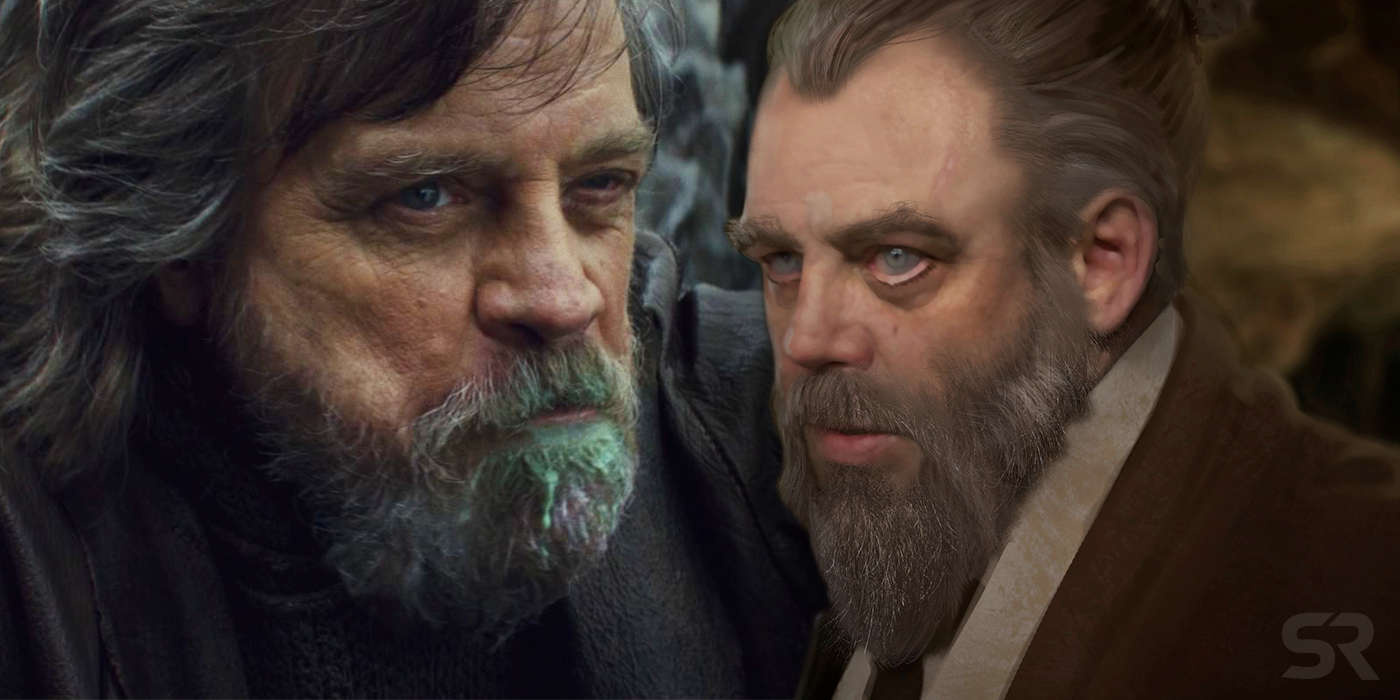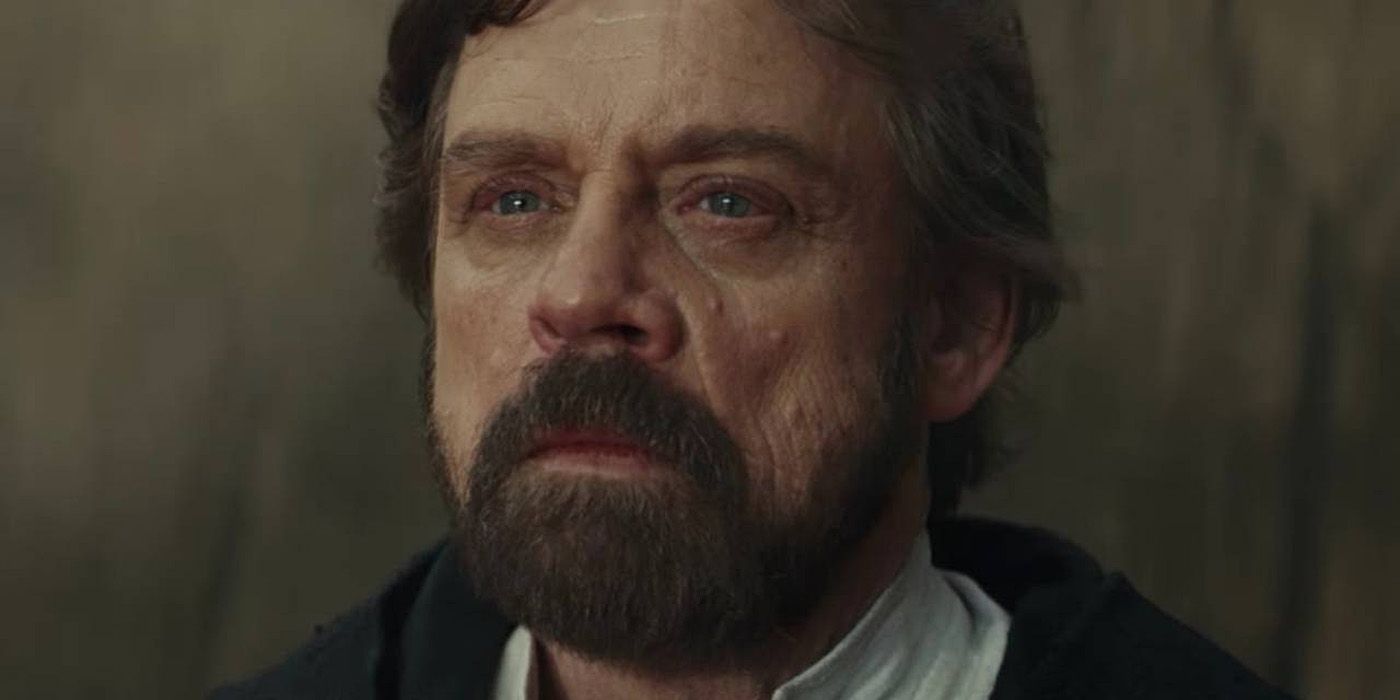Early concept art from Star Wars: The Force Awakens confirms Luke Skywalker was not retconned in The Last Jedi. Though it was clear from the start the franchise's sequel trilogy would focus more on the new generation of characters, there was definite excitement surrounding the long-awaited return of original trilogy veterans Luke, Han Solo, and Princess Leia. For years, fans dreamed about what adventures the trio had following Return of the Jedi, and it was finally going to be seen on the big screen. Of course, with something as prevalent as Star Wars, everyone has their own ideas of what should happen, and some didn't take too kindly to the direction Lucasfilm went in.
After his brief, wordless appearance in The Force Awakens' final scene, Luke had a much more prominent role in The Last Jedi. It's no secret Rian Johnson's portrayal of the hero was highly controversial, with viewers taking issue with Luke's more cynical outlook on life. The young man who once stood up to ultimate evil and saved his father from the dark side turned his back on his friends during their time of need, which didn't sit well with people. In the immediate aftermath, Johnson was accused of retconning Luke, but Lucasfilm apparently had this plan in place years before The Last Jedi premiered.
Related: Star Wars 9 Theory: Flashbacks Will Show Full-Power Jedi Master Luke
Lucasfilm's Creative Art Manager Phil Szostak recently shared concept art of Luke, circa January 2013 (when J.J. Abrams was hired for the directing job). His Twitter post includes a quote from design supervisor Christian Alzmann, who described Skywalker as a "Col. Kurtz type hiding from the world in a cave." This comparison is in reference to Marlon Brando's Apocalypse Now character, a decorated U.S. soldier who went rogue - and it makes it clear there was no Luke retcon to fit Johnson's story. In followup tweets, Szostak shared quotes from artist Doug Chiang, which said Luke was in a "dark place" and had "secluded himself."
Early in The Force Awakens' development, there was concern amongst the creative team that Luke would overshadow the highly-important younger characters (who were meant to carry the story forward). Abrams circumvented this issue by limiting Skywalker's screen time, waiting until the closing moments to show him to the audience. Because of that decision, there needed to be a reason for Luke to vanish and live in isolation on an island. Abrams smartly left that open for Johnson to explore, but he laid out the breadcrumbs. For anyone paying attention, Luke's lightsaber toss and initial disinterest in training Rey shouldn't have come as a surprise. If Luke fled, it meant something devastating happened and he became disillusioned, feeling the galaxy would be a better place without him. Hamill tried to give Abrams a range of emotions in his scene, but rewatching the Force Awakens finale today, it's clear Luke isn't thrilled about being discovered and asked to rejoin the fight.
It's also important to keep in mind Johnson didn't just disregard everything that came before to do his own thing. He was in constant contact with Abrams while writing the Last Jedi script, using Abrams' movie as his lone jumping-off point. Abrams even loved Johnson's screenplay so much, he wished he could have directed it himself, so there clearly weren't many (if any) disagreements between the two. In all likelihood, Johnson knew of the Col. Kurtz angle when he first came on board for Episode VIII and then fleshed it out. And, at least for some viewers, it made Luke's arc in the Star Wars sequel trilogy all the more rewarding.
More: Star Wars 9 Theory: Kylo Ren Is Redeemed Because of Darth Revan
Source: Phil Szostak



